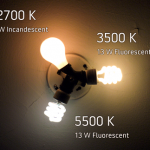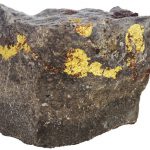 At some point, everyone fantasizes about suddenly acquiring fame and fortune. For most folks, the dream is winning the lottery. However, if you’re the adventurous type and a reader of this blog, you may be more interested in stumbling upon a cache of undiscovered gold. Judging by the number of times this situation appears in adventure films and viral news stories, it’s certainly a popular fantasy. But, even if you keep your eyes peeled during your next camping, mountaineering, or spelunking trip, would you be able to recognize unrefined gold?
At some point, everyone fantasizes about suddenly acquiring fame and fortune. For most folks, the dream is winning the lottery. However, if you’re the adventurous type and a reader of this blog, you may be more interested in stumbling upon a cache of undiscovered gold. Judging by the number of times this situation appears in adventure films and viral news stories, it’s certainly a popular fantasy. But, even if you keep your eyes peeled during your next camping, mountaineering, or spelunking trip, would you be able to recognize unrefined gold?
Native gold, or nuggets, are naturally occurring fragments of gold that weathered out from their original lode. Even though they may still have inclusions from the lode (such as quartz or other minerals), nuggets are usually more than 20 karats or 800 fine. At that level of purity, they can easily be identified through a few simple tests. If you have a trained eye, the luster and color can be dead giveaways – but be sure to account for electrum, a naturally occurring gold alloy that can look pale or whitish yellow. If you don’t have the means to do a scratch test, you can cut at the nugget with a knife to test its malleability. Fool’s gold will flake or shatter against a strong knife, but real gold will dent.
Unfortunately, even if you do have a real chance at discovering gold, it probably won’t be in the form of a nugget. You’re more likely to find a piece of ore that contains small particles of gold. In some cases, a scratch test can reveal gold content if the ore is particularly rich. Otherwise, you can test the ore through amalgamation, or extract any gold (if present) using Aqua regia or cyanidation, all of which require lab equipment and chemistry expertise. But by that point, you’d be using a lot of time and effort for only a small amount of gold. To get that fortune you’ve been daydreaming about, you’d have to open a mine where you found the rock and hope for lots more!











